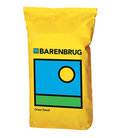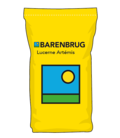Bar Tech
Welcome to the latest BarTech with thoughts, tops tips and advice from the UK Grass Experts on grass and herbal leys for livestock, arable and the environment.
Welcome to the latest BarTech with thoughts, tops tips and advice from the UK Grass Experts on grass and herbal leys for livestock, arable and the environment.
Get started with your grazing strategy with our top tips, different grazing methods and options to maximise your grazing.
What to consider first when planning a grazing strategy
Grazed grass can provide a significant part of most livestock’s dietary requirements, particularly in sheep systems and to in beef and dairy, dependant on the system.
No one grass seed mixture is ever ‘the best’ for grazing but there will be a best one for you dependant on climate, rotation length, stock class and type of grazing management. By carefully considering a small number of factors productivity and profitability from grazed grass can be maximised.
Many of the factors affecting grass growth are climatic and out-with our control. These include geographical location, day length, soil type, soil and air temperature, moisture availability.
The factors affecting grass growth which are under our control are soil fertility and structure, the type of grass crop sown, and the type of management applied to the crop.
All crops, grass included, require good soil structure to allow for aeration, drainage and nutrient supply. Compacted soils are estimated to cost £250/ha/year due to lost grazing days, reduced nutrient uptake (and nutrient loss from run-off), damaged swards and lost grass productivity. Compaction also reduces water movement throughout the soil profile which can lead to waterlogging and environmental pollution.
Assessing soil structure should be as routine as soil sampling. Soils should be sampled every 3 – 5 years (in line with analysis legislation in England and Wales) and more importantly, any issues addressed following sampling. The table below give a good indication of where to aim for;
|
|
Target Index |
Target Volume (ppm) |
|
pH |
pH 6.2 – 6.5 |
n/a |
|
Phosphorus (P) |
2 |
16 - 25 |
|
Potassium (K) |
2- |
121 - 180 |
|
Magnesium (Mg) |
2 |
51 - 100 |
|
Calcium (Ca) |
n/a |
2000 |
|
Sulphur (S) |
n/a |
10 |
|
Sodium (Na) |
n/a |
90 |
|
Manganese (Mn) |
n/a |
65 |
|
Copper (Cu) |
n/a |
8 |
|
Zinc (Z) |
n/a |
7 |
*source: Lancrop Laboratories
Types of grazing methods
Catch crop & arable rotation grazing
As livestock starts to transition back to arable rotations, to improve soil quality, there is a growing demand for short term grass and herbal ley forage options to fit within an arable rotation. Short term grass cops such as Barbumper contains Westerwold and Italian ryegrasses which will (weather and soil condition dependant) establish post-cereal harvest. Their ability to germinate and grow at soil temperatures as low as 4oC facilitates this extension of the growing season. Another option is a catch crop brassica such as Barcoli forage rape.
If grass establishment is in spring, then introducing annual clovers, such as ProtaPlus, is an excellent way to grow grass without adding more than establishment nitrogen and will leave residual fertility for a subsequent crop. The ryegrass component could continue on through winter or could be ploughed in before a winter cereal.
The benefit of grass over brassica’s is it ability to continue to produce (it will regrow after a grazing), better soil cover (so cleaner livestock) and reduced risk of run-off and erosion, and where yields are sufficient, no extra forage is required, unlike with a brassica crop which should not be more than 70% of the dietary DM provision. Spring/summer grass with legumes will leave additional nitrogen for the next crop on top of the nutrients recycled back through grazing livestock’s dung and urine.
Paddock grazing
Widely recognised as the way to graze for maximum yield and grass utilisation, paddock grazing involves frequent stock moves through a series of smaller grazing paddocks. It requires a good level of management; paying attention to grazing heights and pasture covers and monitoring rates of growth across the whole grazing platform (all the paddocks in the rotation). Setting up takes time and money, often a lot of fencing and water pipes and troughs are required in the initial transition from set stocking to paddock grazing. Those who get the best results start with temporary fencing until they learn how each field performs and how best to maximise its potential, it is not just as simple as dividing a 10-acre field into 4.
The potential gains in terms of grass quality are massive. Because paddocks are left to rest and recover and take advantage of their natural cycles of growth, grass yield can be maximised, grazing seasons can be lengthened reducing requirements for silage/hay and utilisation can be as much as 80% of the grass grown. Forage tends to be very high quality providing 11 or 12 ME, high sugar and protein contents with little or no seed heads, stems or dead material at the base of the sward.
The improvements in yield and quality allow for higher stocking densities and more meat or milk to be produced per hectare. The more intense grazing pressure can keep on top of weeds and higher stocking rates mean dung is more evenly distributed across the paddocks.
Paddock grazing gives flexibility to take a paddock out of the rotation to make silage if growth rates exceed stock demand, something that is more difficult on a large field scale.
There are different ideal sward heights for differing stock classes and the Barenbrug Swardstick is an excellent free tool to help measure grass heights and covers, find out more.
Set stocked grazing
The biggest pro of this system is the simplicity, open the gate and let them in. It is a low-cost options as there is no requirement for further infrastructure in terms of roads, fencing or water so may be the only or most sensible option for short term grazing lets or tenancies.
The biggest drawback is its lack of productivity, flexibility and control over sward heights. Grass growth varies throughout the year so at times there may be too many livestock units (LU) and at others, not enough. It is generally accepted that this type of grazing will produce the lowest yield of grass in a growing season and has lowest grass utilisation, as little as 50%
Rotational grazing
Not as intensive as paddock grazing but with more attention to grazing heights than permanently grazing under set stocking allows, rotational grazing is a balance between the two. Yields can be as good as under paddock grazing due to the attention to grass heights, residuals and growth cycles of the grass however the grazing pressure is less intense so more waste can occur leading to a potential utilisation of around 65%.
Some infrastructure is required to sub divide larger fields meaning there are initial increased costs over set stocking but these will be recouped in time by the increased productivity and extended grazing season.
What else to consider for your grazing strategy
Mixture selection for grazing
Investing in a medium to long term rotations is most common, species to consider include perennial ryegrasses, timothy, soft leaved cocksfoot (particularly for sheep), soft leaved tall fescue in conjunction with white clover.
As an example, Long Season or Highlander are good options for beef and sheep enterprises and those erring more on the side of rotational grazing or set stocking grazing. These solutions have higher sward density for long term stock carrying capacity.
Barmix is a long term, multispecies grass mixture ideal for sheep and/or beef systems.
Cut & Graze Combi may be a better option for dairy enterprises and for those with more intensive paddock grazing system. Its higher tetraploid content gives a very upright growth habit to maximise intakes and can also allow for more clover in the sward.
Clover
White clover is an essential species for any grazing platform in the UK regardless of stock class or management system. The ideal clover content of the sward is 30% which will provide up to 120-150kg N/ha of ‘free’ nitrogen per year, but this requires adequate soil fertility and temperatures. Read more on our top tips for clover management. Clover (and the nitrogen fixing rhizobia bacteria in the root nodules) will work between 10oC and 32/33oC soil temperature, activity is optimal around 23-24oC. Appropriate pH and adequate levels of phosphate, potash, sulphur and molybdenum are essential to optimise clover contribution.
As a leafy crop, white clover will reduce a swards overall dry matter content and increase forage intakes, combined with being higher in protein and energy, improves meat and milk yield and milk components.

A blend of red clover varieties, to optimise performance across a variety of environmental and management conditions.

Mineral efficiency, soft leaves, digestibility, effective fibre and drought tolerance.

PROTA PLUS is a versatile mixture of clover and grass. High yields of high quality Italian ryegrass.

Lucerne combines good digestibility with high protein.
Discover our range of grass, forage, clover, herb and legume mixtures for the agriculture sector.
Discover our range of grass, forage, clover, herb and legume mixtures for the agriculture sector.
Discover our range of grass, forage, clover, herb and legume mixtures for the agriculture sector.